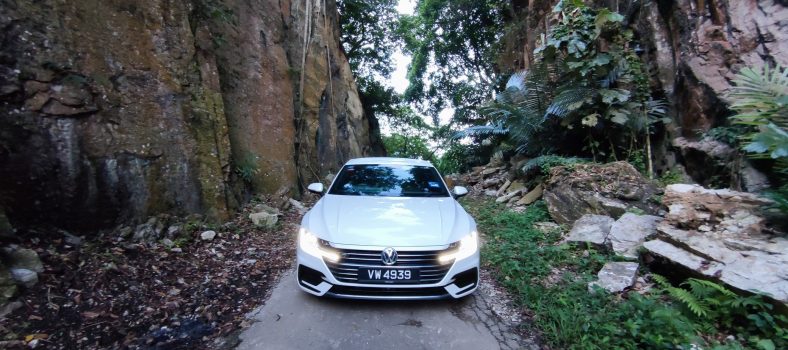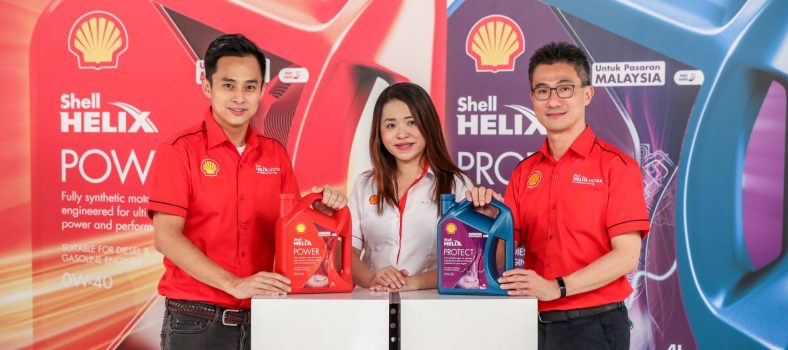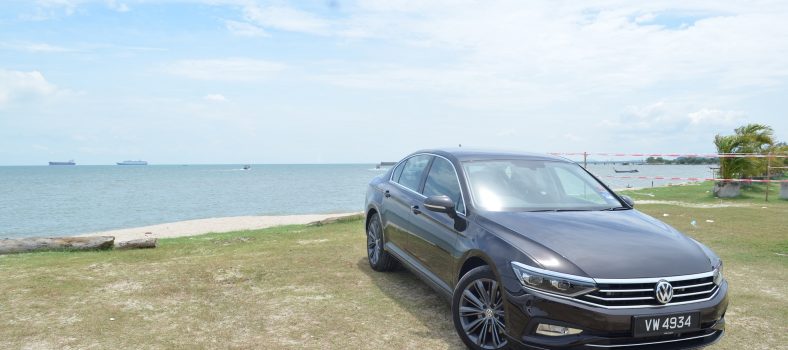.
The government has done a really good job recently …. they’ve got almost every online and above-the-line media talking about the new car price policy ….. and how they should report to everyone that the public should not expect car prices to drop anytime soon and should just continue to buy cars like one normally does with new clothes when it’s near to Hari Raya. The thing is, we all know a few things to be true:-
.
1) Both government (and opposition) promises car price reduction and everyone is holding on to new purchases for the government to make good of their promise
2) Which then directly affects sales of new vehicles.
3) Economy isn’t as rosy as it is and with the imminent implementation of the Goods and Services Tax which would see a rise on cost of living for every Malaysians, everyone is a whole lot more cautious in the way they spend their hard earned cash. The thing about not knowing when the GST is going to hit is like walking in a dark tunnel, smelling shit ahead but can’t see when and where you’re going to step on a pile.
.
The sale of motor vehicles for the first quarter of 2013 pre-election wasn’t that bad. In fact, it had an increase from RM18,212,664 to RM18,552,074 (source from the Department of Statistics, Malaysia 1st quarter report found HERE in page 16). A marginal 1.86% increase, I know but at least it was status quo. When the Malaysia Automotive Association started reporting falling sales of new cars for the 2nd consecutive month after the general elections, it sent alarm bells ringing across the industry. There is little indication that things will improve much in the coming months, no thanks to the government making a promise that has both long term positive and negative implications. Understandably, the manufacturers are unhappy with this development and is probably expecting the government to make a step out of the grave they have dug themselves in.
.
A press conference was recently called by the Malaysian Automotive Institute (MAI), Ministry of International Trade and Industry’s (MITI) brains in drafting the nation’s automotive policies to explain why one shouldn’t bother to wait to buy that car you’ve been dreaming of owning. Maybe its CEO, Mr Madani Sahari got tired of so many people asking him if now is the best time to buy a new car. At any rate, let’s look at what makes up a car’s price:-
(A) Into Showroom Cost (ISC)
Ex-Factory Price + Distribution Cost + General Expenses + Profit
(B) Excise Duty
ISC x Duty Rate
(C) Other Cost Element
Marketing & Promotion + OverTrade Value + Dealer’s Margin + Accessories + Others
(D) Sales Tax
(A) +(B) + (C) x 10%
.
On the Road (OTR) Price = (A) + (B) + (C) + (D)
.
Note that OTR price does not include insurance, road tax, etc which explains why certain manufacturers like Volkswagen does not factor this in when showing their selling prices.
.
Here’s some additional facts:
.
With regards to excise duties, any fully imported (CBU) vehicles are slapped with duties ranging from 75% – 105% depending on engine cc (more info on this can be found in MAA’s site HERE).
With regards to import duties (up to 30%), ASEAN made cars are exempted so long as at least 40% of parts that makes up the car is sourced within ASEAN.
.
So which element has the bigger pie is really subjective and the general perception of the main culprit is the excise duty. But is this really true? Take a look at this:
.
The government collected RM7.143bil in the form of excise duties in 2012 (refer Treasury Report HERE in Page 12).
Total sales of vehicles in 2012 is RM74.85bil (refer Department of Statistics, Malaysia 1st quarter report found HERE in page 16)
.
Assuming the numbers reported to the government above is true (and my Math isn’t too rusty), the excise duty represents just 9.5% of the total cost of vehicles. Don’t forget that excise duty % increases with engine capacity so 9.5% is an average. This means all the story about prices being reduced by more than 40% with the removal of the excise duty is just that …. stories. All that hoo-haa for a mere 10% discount? That’s so anti-climatic.
.
So what makes our cars so high then?
.
Looking at the calculations of the vehicle’s price again, the excise duty is dependent on the ISC. One might argue why not go the CKD route? Then again, why on earth are our CKD prices so blardy expensive, with little or no savings (for those like the CKD Honda Jazz and Mazda CX-5 which saw omissions of kits concurrent with the marginal price decrease)? Answer: Taxes on parts (which can be from 30-50% depending on whether the custom’s books) and company profits.
.
This is where MAI claimed that certain manufacturers are reaping abnormally high profits. With the Sales Tax is capped and is applied across the board at a 10% rate , the main 90% of the remaining cost comes predominantly from the ISC and Other Cost Elements. It is not difficult to point the finger at manufacturers who may have had significant savings in the ex-factory price due to increase local content. As mentioned by Mr Sahari, some of these manufacturers don’t even need to pay custom excise duties on parts due to value added activities in Malaysia.
.
So the question is, where do we go from here? MAI’s CEO said the key reason why these companies can get away with robbing Malaysians blind is due to lack of competition in the market. I agree to a certain extent because I believe there is a lot of Malaysians who’s blindly following badges instead of considering the totality of the product offering. Reasonings such as high resale value, good driving experience, etc cloud their judgement. What’s worse is the government cannot enforce profit levels of individual companies. MAI’s solution is to increase competition by liberalizing the market. By having more vehicle choices, the market place will force each manufacturer to be more competitive in terms of specs and pricing.
.
Which is based on the basic fundamental understanding of reduce price, increase affordability and get more sales. But something about what Mr CEO said doesn’t quite add up. One of the component that makes up excise duty is profit; therefore an increase in profit would mean an increase in excise duties. This is a two-fold problem and since the excise duty collect last year makes up only a small portion of the cost, it may be that the high profits of some are balanced with those who make less. The problem with overall figures is that you can’t really pinpoint where is the exact issue.
.
The next big question is, how long do Malaysians have to wait before the market is liberalized? When are current (and future manufacturers) going to up their ante and provide better specifications, increase the number of showrooms and service centres, improve after sales and ultimately reduce profits and decrease OTR prices? The government had to protect Proton earlier on …. now that they’ve sold it to HICOM, it’s possible that they may relax boundary barriers. Still, it may take years before we can see a level playing field for all.
.
And so in a democratic economy where supply is dictated by demands, not buying that new car now might not be such a bad idea after all ….
.
.
.




5 Comments
Kill of Proton and maybe we’ll see real competition. APs is a contributor to the pricing too.
Just go to any European website, mags, tv-shows that talk about cars and you’ll know how badly we’re screwed.
Before the Jetta was launched here, it only cost roughly RM70k in Dubai; given the lowest specs, still a hell lot more cheaper than what we get here.
Very good analysis, and great job on providing the proof to substantiate your facts.
May I also add that as an owner of a CBU Jazz Hybrid myself, and many may already know, the declared market value as stated in the AP is only RM59,487. This is stated as CIF prices so it already includes freight; and the final market value, exclusive of Import Duty & Excise Duty but inclusive of Sales Tax (10% @ RM13,533.29) sums up to RM73K.
So the remaining RM22K is the manufacturer’s profit margin, which at first glance seems fair ’cause they have to set up shop and maintenance here. However, looking at the Honda UK website a minute ago, a similar Jazz Hybrid (since our CBU units are actually Europe specs so they are actually the same models) is priced at £16,770 (RM80,616 via google currency exchange).
So it begs me to wonder, if they can sell the same model in UK, such a competitive market at RM15K cheaper (CBU units), why can’t they do the same here in Malaysia where there’s a cult for both “H” and “T” brands? I won’t be surprised if the CIF prices are over-declared in order to bump up the final selling price of the car, since the 10% sales tax is passed on to the customers anyway.
As a student of Economics myself, it all comes down back to the imposed taxes because they artificially bump up market prices. Supply here does not equal to demand and there is an excess supply, so the consumers ultimately loose out.
But why so? Its because manufacturers can afford to do so, and I would argue they HAVE to do so. If they price according to international prices they loose the advantage of product differentiation as naturally they are placed above local brands of Proton & Perodua. And I wouldn’t blame the manufacturers because they are ultimately profit organizations and this is what they do best — maximizing their profits. And I wasn’t surprised at all when CKD prices of RM89K were announced together with the reduction of equipment. Honda can well indeed go lower but any lower they would risk offending the oligopoly players in the local market.
What’s depressing is the fact the gov’t chooses to retain those taxes and blaming it on the manufacturers and lack of competition; while the taxes themselves are after all, a barrier to a free-market industry. This is indeed the biggest irony of them all.
What’s even more outrageous is that one of my friends who works with the gov’t supports the notion of high car prices because like Singapore, it discourages car ownership and forces people to utilize public transportation. This supports the ongoing MRT projects right now which will build a foundation of infrastructures for the next generations.
What they fail to realize is that Malaysia is nowhere like Singapore. We have both the resources and the land to surpass what Singapore has been frantically limited all these while. Given the increase of urban population in Klang valley in the future, I don’t think public transportation will ever be capable of dominating over individual car ownership and will only serve to relieve traffic congestion on the roads.
In the end, I think the makers of the game: Sim City would do a much better job of managing a country than what our government is doing right now =)
Thanks for dropping your views. I truly appreciate it.
Hmmm, with regards to your CBU Jazz, I find it rather strange. As you say, the CIF price is RM59.5k. I’m not entirely sure but that sounds like the ex-factory “declared” price arrival at port. Unless it’s a door-to-door delivery, the Distribution, General and Profit costs have not been factored in. Following the formula given by MAI, sales tax cannot be calculated until we have all the other costs factored in. The CBU Jazz Hybrid was selling for the price of RM94,800. Assuming it was sold at full price, the sales tax would have been around RM8,600. Working backwards, we assume this:-
RM59.5k + Distribution Cost + General Expenses + Profit + 75%(RM59.5k + Distribution Cost + General Expenses + Profit) + Marketing & Promotion + OverTrade Value + Dealer’s Margin + Accessories + Others + RM8,600 = RM94,500
All the unknowns are collectively summed at RM26,700 and somewhere in there is that 75% excise duty. Even without looking at the individual breakdown, the RM26,700 represents only 28% of the total vehicle price with the bulk of it being the ex-factory price. BUT, we need to consider one more thing; since 2011, the government has been giving FULL import and excise duty exemptions. Striking off that 75% tax, it would appear all other expenses are up to the manufacturer to declare as they see fit. Small wonder why Honda felt it’s viable to set up a CKD production here in Malaysia. Makes me wonder who the MAI CEO was referring to when they said some companies were earning abnormally high profits.
hmm, I’m very sorry to post a link to another website here, but LLD truly gives quite a convincing explanation for the FOB prices:
http://www.livelifedrive.com/malaysia/news/view/3808/explaining-the-mystery-behind-high-car-prices-in-malaysia—part-2
I’m in no way affiliated to LLD by the way, just a concerned citizen who’s enthusiastic about cars & issues on Economics =)
Actually limiting the players in the market to the well connected is also part of the problem. Why must GLCs be favored with licenses to franchise any brand? Isn’t it ironic that while the blame is constantly being shifted between the govt and distributors, they are actually both the one and the same?
While it is hard to determine the actual excise duty collected from overall profit figures, isn’t it odd that it is far below the minimum amounts? There has been sneaking suspicion that while the excise duties are collected, it has been going to into the pockets of distributors instead of the govt. Is the govt going to fix this issues by first regulating the GLCs involved in this scam?
The article link posted by Ken only scratches the surface of how the govt and their enterprises are involved in this elaborate vehicle pricing scam.